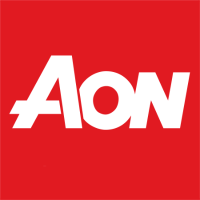Aon conducted the survey, “Adjusting Total Rewards Programs and Workforce Strategies in Response to COVID-19,” between April 7-10, 2020 and a total of 1,889 organizations around the world responded, with 1,469 responses applicable to the North America region. Complete study results are available here. The survey followed an initial study conducted from March 17-20, 2020 with a total of 2,028 responding organizations, which is available here.
“This data comes at a pivotal time for our clients. We know companies have a strong desire to help their people as much as possible; yet, many firms also face very difficult economic conditions,” said Alex Cwirko-Godycki, chief strategy officer for the rewards practice at Aon. “The actions cited throughout our study reflect this dichotomy; efforts to manage costs are accelerating, and at the same time, companies are also taking significant steps to support employees working in new or more difficult environments.”
Managing the Cost of Total Rewards Programs
Between Aon’s March and April surveys, a span of three weeks, the prevalence of companies in North America delaying or cancelling salary increases for employees grew from 14% to 32%. This trend mirrors Europe, where the same figure grew from 17% to 35% over the same period.
In North America, the prevalence of companies asking employees to take reduced salaries on a voluntary basis reached 7%, with involuntary pay reductions climbed to 10% of firms. Executive officers are most likely to be covered by these actions, but roughly 40% of firms cutting pay are doing so across their full workforce. Of note, some firms reported a mix of voluntary and involuntary actions.
While companies continue to explore ways to manage or reduce total rewards costs through changes to health and benefits plans and retirement programs, few firms have executed cost-saving measures in these areas. For example, in North America, only 5% of companies have suspended employer matches, profit sharing, or other non-elective employer contributions for defined contribution retirement plans. Additionally, only 2% of companies have reduced paid leave benefits.
Other common actions to manage total rewards costs include reducing or eliminating spend on contractors and cancelling or postponing employee training programs, which 39% and 34% of firms, respectively, reported doing in North America.
Supporting Employees
In contrast to the cost management actions described above, companies are moving swiftly to supplement support programs and leave benefits for employees. For example, in North America:
- 70% of companies are providing additional scheduling flexibility to employees with children;
- 57% of companies are providing as-needed payments or equipment purchases to assist employees with work-from-home arrangements;
- 42% of companies are providing temporary increases in sick leave entitlements (e.g., special "pandemic leaves");
- 38% of companies are allowing employees to use sick leave for COVID-19 related quarantines (in addition to what is required by law); and
- 26% of companies are allowing employees to use sick leave to care for children when they are off from school (in addition to what is required by law).
Additional Compensation for Employees in Higher-Risk Roles
“Led by firms in North America, companies are continuing to implement additional compensation programs to support and recognize employees working in front line or essential roles with respect to the COVID-19 pandemic,” Kelly Voss, a partner in the rewards practice at Aon, said. “While these actions have commonly been referred to as ‘hazard pay,’ companies are reluctant to use this term given the level of protections in place, instead opting to call programs enhanced pay, pay premiums or special pay to recognize their contributions.”
In North America, 18% of firms now have additional compensation programs in place, with another 15% of firms actively considering such actions. Among companies offering additional compensation to employees in higher-risk roles, 93% identified themselves as offering essential products and services in the context of stay-at-home and lockdown regulations.
Layoffs and Furloughs
In North America, 8% of surveyed firms report layoffs, while another 18% of firms are actively considering such actions. Similarly, 13% of surveyed firms have furloughed employees and 19% are actively considering such actions. Of note, these figures include some companies both laying off and furloughing employees.
“Faced with significant drops in consumer demand for certain good and services, or government regulations requiring a suspension of normal business operations, the prevalence of companies reducing the size of their workforces, especially through furloughs, is on the rise,” said Dawn Conrad, a senior partner in Aon’s strategic advisory practice.
These figures vary significantly by industry. For example, 56% of surveyed retailers in North America report furloughing employees, followed by 30% of manufacturers, and in stark contrast, only 5% of technology firms have furloughed employees.
A supplemental report on furlough practices in North America finds that while furloughs result in reductions in pay and hours worked for employees, often down to zero, a large majority of companies implementing furloughs are continuing to treat insurance coverage as “active” during furlough periods and continuing with employee contributions. The supplemental report is available here.
The State of Hiring
In North America, 23% of companies now report the implementation of hiring freezes, followed by 10% of firms with delayed hiring approaches. Another 47% of companies report very selective or cautious hiring, usually for critical roles and key replacements only.
Only 18% of companies report normal hiring plans, followed by 3% of firms with accelerated hiring. Among companies with normal or accelerated hiring, 77% provide essential products and services in the context of stay-at-home and lockdown regulations.
Looking Ahead
When asked how the experience of responding to COVID-19 might change future workforce strategies, 44% of companies in North America expect their digital transformation agendas to accelerate following their initial response to COVID-19. Eighty-three percent of companies anticipate their exploration of different working models, such as, expanded working from home and increased flexible hours approaches, will accelerate as well.













